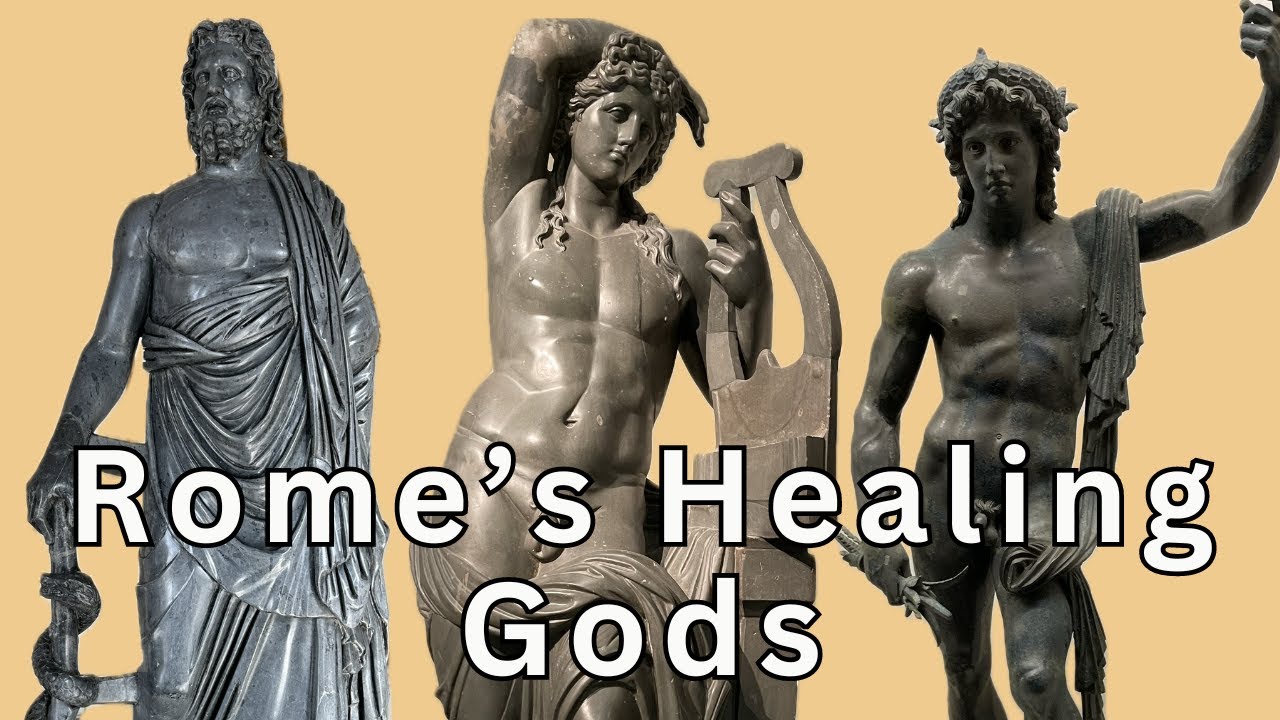Start with our video overview:
When we think about the history of medicine, our minds often jump to the great advancements of the 19th and 20th centuries. Any further back, medical practices appear almost medieval, with treatments such as bloodletting, balancing the humors, and leeching. Yet in antiquity, healing was shaped by a unique interplay of religion, ritual, and natural remedies. The ancient world was filled with sanctuaries dedicated to gods and goddesses believed to aid in health and recovery.
One of the most famous healing sanctuaries was at Epidaurus in Greece. Located in the northern Peloponnese, Epidaurus welcomed hundreds of pilgrims each year who sought the aid of the god Asclepius. Patients underwent a ritual of incubation, spending the night in the temple to await the god’s appearance in their dreams. The following day, priests interpreted these dreams to prescribe cures. The sanctuary was filled with votive offerings and dedications, left in gratitude for the god’s healing power.
In mythology, Asclepius was the son of Apollo. According to one tale, he showed kindness to a small snake, which in turn slithered up and licked his ear, whispering the secrets of medicine. From this story, snakes became symbols of Asclepius, often shown coiled around his staff. That image endures today as the universal symbol of medicine, seen in hospitals and pharmacies worldwide.
Apollo himself was also closely connected with healing and disease. His principal sanctuary stood on the island of Delos in the Aegean Sea. In antiquity, it was forbidden to be born or to die on the sacred island, for fear of spiritual pollution. Myth tells us that Apollo’s mother, the Titan Leto, was cursed by Hera never to give birth on solid land. She found refuge on Delos, an island said to float untethered, and there she bore Apollo. In the Iliad, Apollo was described as unleashing plague upon the Greek camp by firing arrows tipped with disease, a pestilence only lifted once the Greeks had appeased him. Like many of the Olympian gods, Apollo embodied both the power to harm and the power to heal.
In Rome, Apollo Medicus was invoked during plagues. Later, Augustus elevated Apollo’s cult with grand temples, including one on the Palatine Hill. Other healing deities include Bona Dea, the good goddess, who embodied chastity, fertility, and healing. Salus personified health itself, while Febris addressed fevers. Even Veiovis, a youthful form of Jupiter with Apollo-like traits, had healing associations, with temples on the Capitoline and Tiber Island. Tiber Island itself became one of history’s earliest quarantine zones, after one of Asclepius’ sacred snakes swam ashore and made its home there.
Ultimately, healing in antiquity combined natural remedies, medical knowledge, and divine intervention. Sanctuaries across the Greco-Roman world show how widespread this fusion of religion and medicine was. People sought relief in springs, temples, and dreams, leaving offerings to the gods who held power over sickness and recovery. These practices reveal both the limits of ancient medicine and the enduring human need to find meaning and hope in the face of illness. The openness to medical knowledge and its importance helped famous ancient physicians like Hippocrates and Galen lay the foundations of Western medicine, a legacy still studied and revered today.
Bibliography
- Bliquez, Lawrence. “Greek and Roman Medicine.” Archaeology 34, no. 2 (1981): 10–17. http://www.jstor.org/stable/41727119
- Holowchak, Andrew. “Interpreting Dreams for Corrective Regimen: Diagnostic Dreams in Greco-Roman Medicine.” Journal of the History of Medicine and Allied Sciences 56, no. 4 (2001): 382–99. http://www.jstor.org/stable/24623949
- Jones, W.H.S. “Ancient Roman Folk Medicine.” Journal of the History of Medicine and Allied Sciences 12, no. 4 (1957): 459–72. http://www.jstor.org/stable/24619369
- Renberg, Gil. “Public and Private Places of Worship in the Cult of Asclepius at Rome.” Memoirs of the American Academy in Rome 51/52 (2006): 87–172. http://www.jstor.org/stable/25609491
This content is brought to you by The American Institute for Roman Culture, a 501(C)3 US Non-Profit Organization.
Please support our mission to aid learning and understanding of ancient Rome through free-to-access content by donating today.
Cite This Page
Cite this page as: Darius Arya, The American Institute for Roman Culture, “Healing Cults in Ancient Rome,” Ancient Rome Live. Last modified 10/12/2025. https://ancientromelive.org/healing-cults-in-ancient-rome-2
License
Created by The American Institute of Roman Culture, published on 10/12/2025 under the following license: Creative Commons: Attribution-NonCommercial-ShareAlike. This license lets others remix, tweak, and build upon this content non-commercially, as long as they credit the author and license their new creations under the identical terms. Please note that content linked from this page may have different licensing terms.




